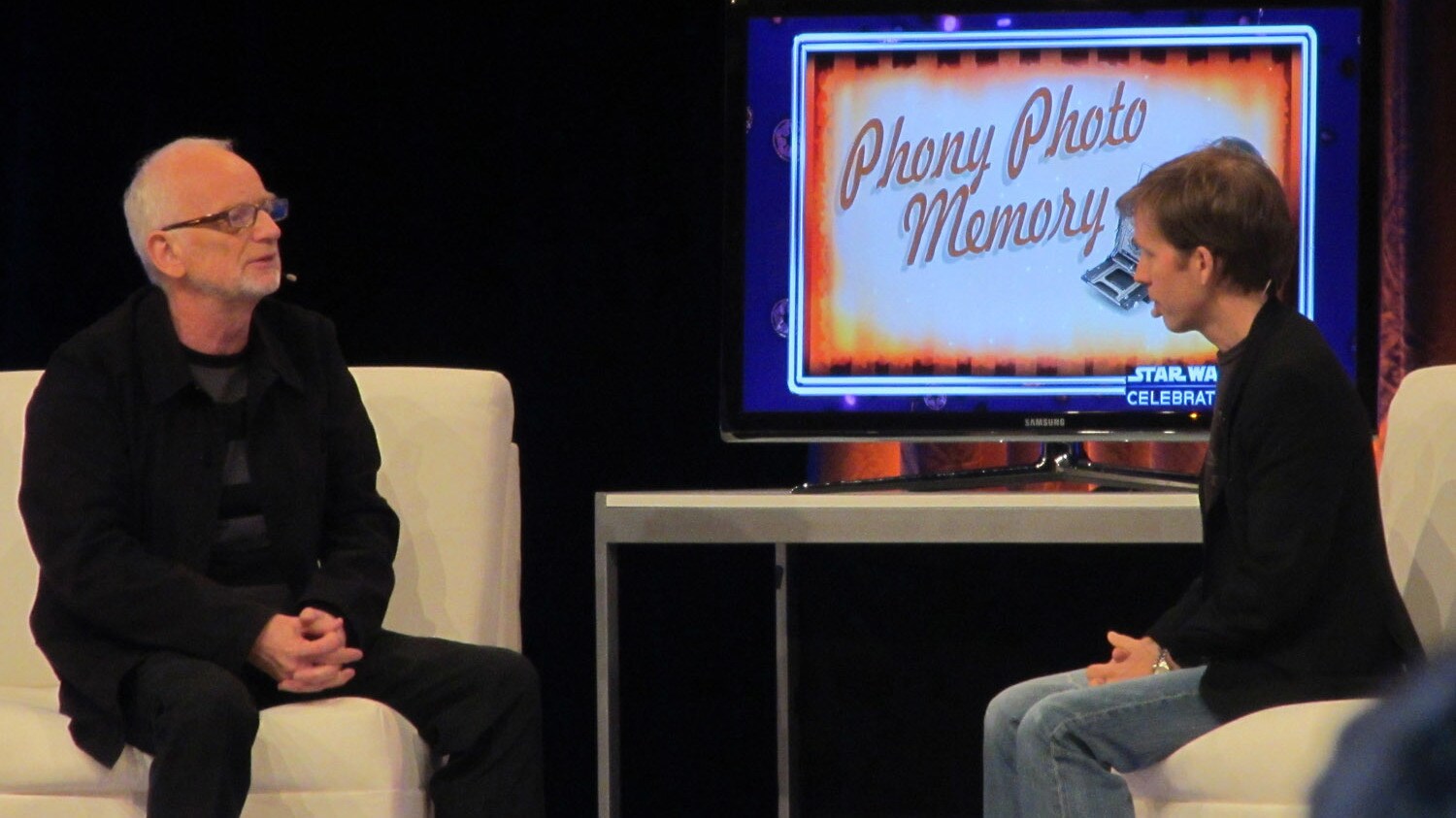
I went into the future of Star Wars in 3D panel excited to see clips from Attack of the Clones and walked out with a much greater appreciation for what it takes to make the films suitable for 3D. I have to admit that I didn't realize the extent of the process. It took about a year to transform The Phantom Menace from start to finish. Impressive, most impressive. Visual effects supervisors and masters Dennis Muren and John Knoll took the stage to discuss the painstaking work that goes into the conversion process.
Before they dove into the details of that process, they shared a clip showing several converted scenes from Attack of the Clones. It looks stunning. The montage included Kamino, Coruscant, the Yoda and Dooku fight, and the gathering of the clone troopers among other scenes. I have to admit that 3D isn't always my thing, but the brief bit of footage we saw really made me anxious to see the rest of the saga converted.
The process that Prime Focus uses to push the film through to 3D was what really left an impression on me. They literally have to work on every shot to determine the distance of the characters from the backgrounds and to see how they relate to other characters and assets in the scene. They don't go to the finished films and apply an effect; they pull out the original elements to get an understanding of how they were put together in the first place.
They start with with looking at sets, photo references, pictures of CG models built for the movie, etc. It gives them an architectural plan to work with in a 3D space so they can see how close characters are to the back wall. Lucasfilm provides those models and anything else that will help the artists have an understanding of an accurate space. Muren pointed out that those of the crew who worked on the films initially had a bit of an advantage in this area.
After the artists understand the measurements between everything in the shot, they have to separate all the objects, add depth, and then put them back together. Very simply put, it looked a lot like taking apart a puzzle and putting the pieces in the correct place while making them even better. The important takeaway for me was to learn it is the opposite of pushing a button that magically changed everything. It's very deliberately and carefully designed.
As Muren said, 3D is really an art form. You guide the viewers' eyes just like you do while you're filming. You can change textures, accentuate facial expressions during close-ups, and in some places even re-create pieces of the backgrounds. Knoll likes the freedom of the method because you're not locked into certain aspects like you are with film that's actually shot in 3D. Muren mentioned how 3D is appropriate for some films but not all of them - Star Wars is definitely made to be seen this way. I can't wait to check out Attack of the Clones in 3D.
Amy Ratcliffe is addicted to Star Wars and writing. You can follow her on Twitter and keep up with all things geeky at her blog.











